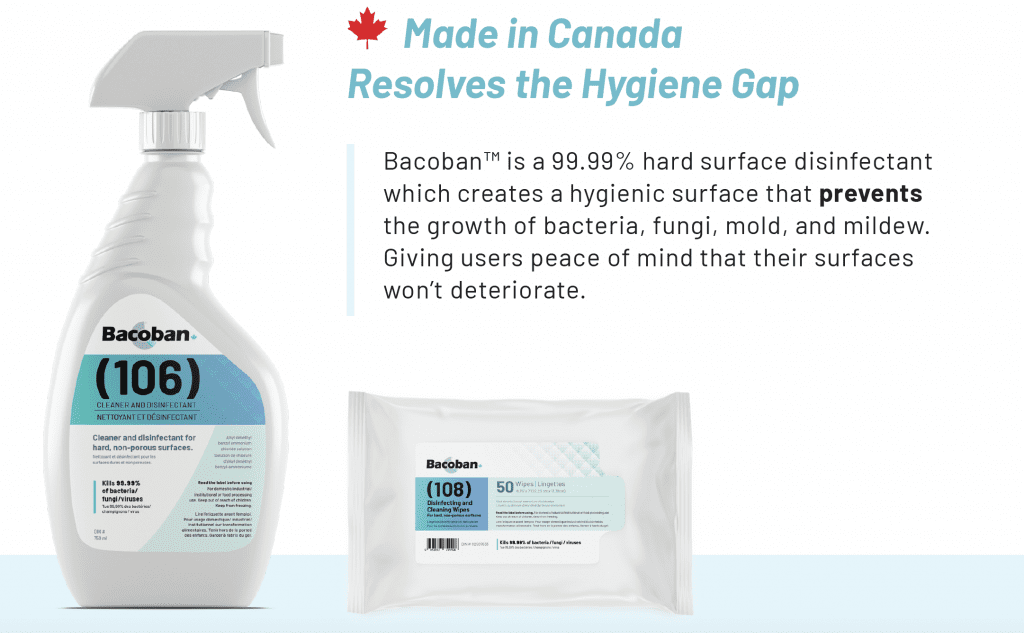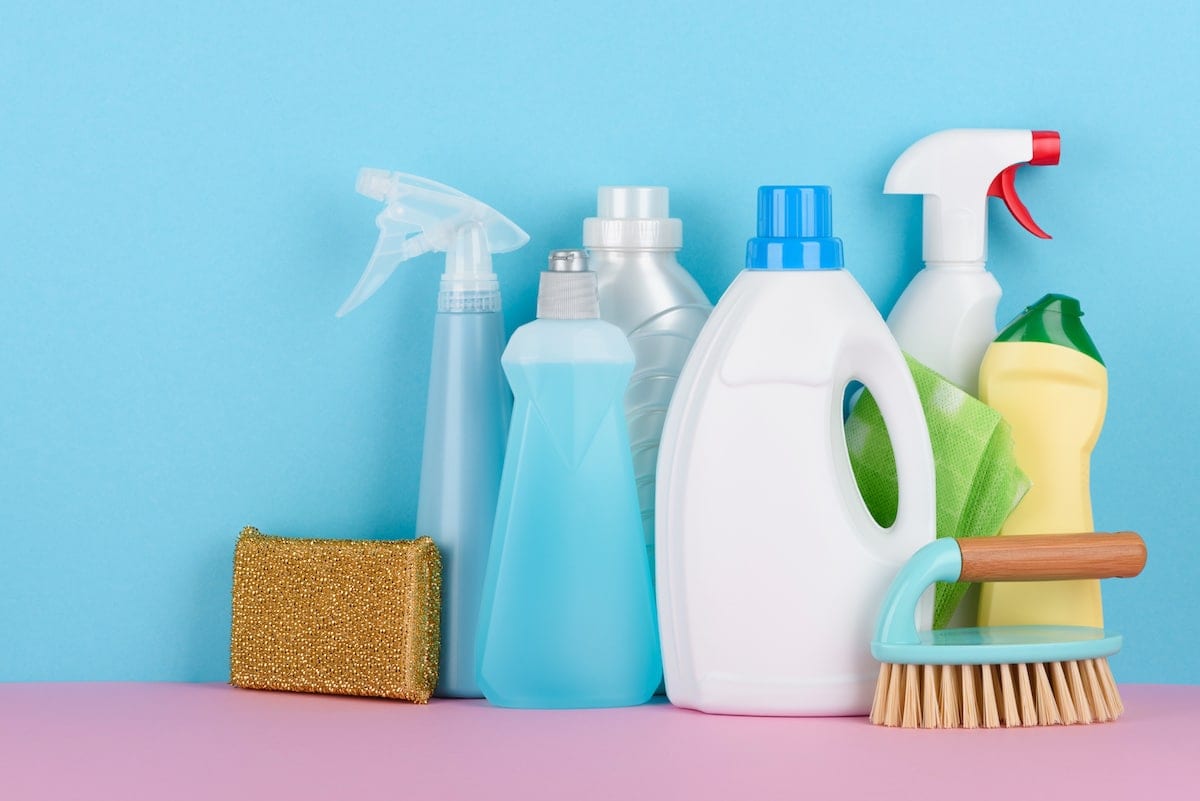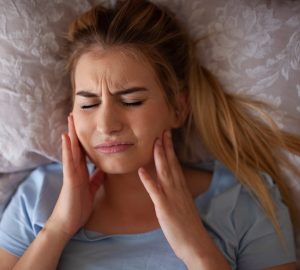Awareness of VOCs (Volatile Organic Compounds) has increased over the last few years, but there is still so much disinformation and scare stories if you read about them online. Yes, VOCs are real. Yes, they can harm your health. But you can take reasonable measures to reduce or completely remove exposure to the most harmful ones. This article will help shed some light about how safe are VOC’s in household cleaning products
The purpose of this article is to look objectively at VOCs in your cleaning products, describe what they are, what risks they present and how you can mitigate these risks.
What are VOCs?
Volatile organic compounds (VOCs) are chemicals that pollute the air around us, released by everyday items, such as: cleaning products (detergents, bleaches), air fresheners, paints, and deodorants. The chemicals easily evaporate at room temperature (are ‘volatile’), and are used in the manufacturing process or specifically added to products as fragrances, aerosols, or preservatives as examples.
There are numerous VOCs in everyday household products, although this may not always be clear from the ingredient label. It is worth noting that VOCs in household products can react with the air around us to create further VOCs, which can themselves be associated with health risk asking the question – how safe are VOC’s?
BACOBAN CLEANING PRODUCTS CONTAIN ZERO VOLATILE ORGANIC COMPOUNDS

It’s important to ensure the disinfectant you use around your home or business doesn’t contain any harmful volatile organic compounds! VOC’s can create unhealthy airborne vapours that can cause eye, nose, and throat irritation, shortness of breath, headaches, fatigue, nausea, dizziness, and skin problems. Higher concentrations may cause irritation of the lungs, as well as damage to the liver, kidney, or central nervous system. In some long-term cases even cancers.
With the increase in cleaning mandates, it’s important to know that Bacoban does not contain any (VOCs)!
- Health Canada Approved
- No Volatile Organic Compounds (Zero VOC’s)
- Kills 99.99% of viruses, bacteria & fungi
- Zero Phenol and Aldehydes
- Will not damage surfaces
- No harsh chemical smell
- Reduces odor
- Water based
What are the risks of VOCs in cleaning products?
A 2003 California Air Resources Board study found that cleaning products alone account for 7.4tonnes of VOCs released per day (based on a population of 33 million, which equals around 82grams per person every year). This considerable VOC pollution has been shown, or associated, with a range of adverse health effects.
1. Asthma
Asthma attacks can be triggered by a range of allergens and household pollutants, including VOCs. Household exposure to VOCs has been shown increase the risk of asthma, with a 1.6-fold higher risk in adults, and 1.5 to 2.5-fold risk in children. In California, it has been reported that 11% of work-related asthma attacks are due to VOCs in cleaning products.
It should be noted that a 2015 systematic review of 53 studies evaluating how safe are VOC’s in asthma concluded that much of the evidence was of low quality, with inconsistent results. Larger clinical trials are required into if and how VOCs increase the risk of asthma, and if a reduction in exposure to VOCs can clinically improve the symptoms of asthma.
2. Eczema, contact dermatitis and skin conditions
Much like asthma, household exposure to VOCs has been associated with an increased risk of eczema, with the risk shown to be between 1.1 and 2.3-fold. In addition, the ingredients in cleaning products are thought the be responsible for contact dermatitis in 0.7% of the population. Household exposure to VOCs is thought to increase the risk of experiencing skin reactions to the irritant ingredients in cleaning products.
3. Endocrine and immune disruption
Many VOCs have individually shown to be responsible for endocrine (mostly with effects on fertility) or immune disruption (unexpected inflammatory responses) [10]. These studies have mostly been in animals, and high-quality studies linking household VOC exposure to hormone disruption in humans are lacking. The correlation is often made because these VOCs can be detected in low quantities in human blood, but the effects aren’t yet clear.
4. Cancer
Several VOCs are known or probable human carcinogens, including formaldehyde and benzene. A 2007 study by researchers at Harvard School of Public Health determined that the overall lifetime risk of cancer due to VOCs was between 0.06-0.1% – although this study included indoor and outdoor exposure, in addition to dietary sources. Permittable levels of the most carcinogenic VOCs in cleaning products are restricted nationally.
Recognizing VOCs on ingredient labels?
Unfortunately, labelling regulations in the EU and US allow product manufacturers to provide very little ingredient information to consumers. In Europe, only ingredients over 0.2% or known to be harmful (excluding those used in the manufacturing process) are required to be on the label. In the US the situation is even worse, and the manufacturer can disclose the ingredients they want to disclose.
This means most VOCs cannot be found on ingredient labels.
Can you reduce exposure to VOCs?
It’s extremely tough to eliminate VOCs exposure, due to their prevalence in household products, and steps can be taken to reduce the risk. Steps to reduce VOC exposure include:
- Open windows and doors to increase ventilation
- Follow product instructions (e.g. standing certain distance away)
- Never mix cleaning products. This may inadvertently create harmful VOCs.
- Understand what ingredient s are in products that you use, and recognize/monitor the most harmful components
- Use less toxic alternatives where available (for example, cleaning with baking soda and vinegar)
Summary
VOCs are potentially harmful pollutants, released by household items, including cleaning products and air fresheners. These have been associated with a range of adverse health effects, including asthma, eczema, reduced fertility, and cancer risk. It can be difficult to find reliable ingredient information for VOCs in cleaning products, and so milder alternatives or ‘ingredient-free’ products are often the only options.








